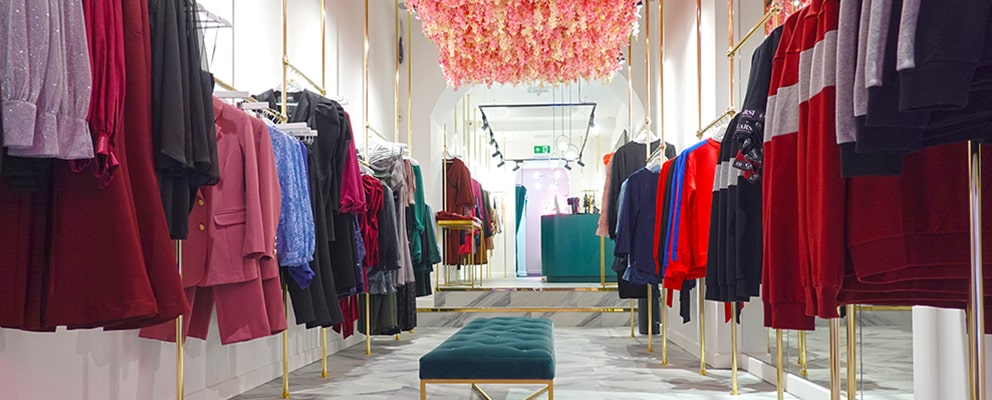The process of transforming a retail space from a simple concept to a fully operational store is both thrilling and challenging. A well-executed retail fit-out not only enhances the aesthetic appeal of your store but in addition plays a crucial role in shaping customer experiences and driving sales. With the appropriate approach, a meticulously planned fit-out can create an welcoming atmosphere that encourages shoppers to spend more time in your store and ultimately boosts your bottom line.
In this comprehensive guide, we will explore the intricacies of retail fit-outs, covering everything from layout and strategy to budgeting and project management. If you are launching a start-up, going through a renovation, or looking to revitalize an existing space, understanding the fit-out process is essential for creating a store that resonates with your intended audience. Join us as we navigate the steps involved in a productive retail fit-out and discover the trends and innovations that are defining the future of retail environments.
Grasping Retail Outfitting
Retail fit-outs refer to the procedure of transforming a bare space into a completely operational retail space that fulfills the specific needs of a business. This process begins with the initial concept, where brand owners and designers collaborate to envision how the space will not only appear but also function. It encompasses everything from the layout and design to the selection of materials and fixtures. An effective retail fit-out is important for ensuring that the brand message is conveyed clearly and that customers feel welcomed and engaged.
The importance of retail fit-outs goes beyond aesthetics. A carefully designed fit-out can considerably enhance the customer experience, allowing for comfortable navigation and product visibility. By carefully considering aspects such as store layout, lighting design, and the integration of branding elements, retailers can create captivating shopping environments that promote customer interaction and repeat visits. This calculated approach directly relates with increased sales and brand loyalty.
In the modern competitive market, staying current with retail fit-out trends is crucial. Businesses must modify to changing consumer preferences, emerging technologies, and eco-friendly practices to stay competitive. Innovations in design and the implementation of smart technology can result in unique customer experiences that set a store apart from its competitors. Understanding the details and trends within retail fit-outs can empower businesses to create spaces that not only draw in customers but also embody the brand's identity and values.
A Commercial Fitting Process
The retail fit-out process is a vital step that changes a theoretical design into a functional retail space. It starts with comprehensive planning and design, where companies focus on their goals, target audience, and brand image to create a blueprint that appeals with shoppers. Engaging with expert designers ensures that every element, from layout to fixtures, is purposeful and optimized to enhance customer flow and satisfaction.

Once the design is approved, it's time to move into construction and installation. This phase typically involves working with builders and vendors to bring the vision to life. Effective project management is essential during this phase to ensure that deadlines are adhered to and that any foreseen issues are resolved promptly. Coordination between all stakeholders involved plays a critical role in sustaining progress and keeping the initiative within financial constraints.
After building, the next stage involves styling and displaying the space. This is where the brand's personality is brought to life through branding, illumination, hue schemes, and product arrangements. An engaging store setting not only draws in customers but also encourages them to explore further, leading to increased revenue. Properly executing this last stage is essential to creating a friendly atmosphere that encourages shoppers to return.
Eco-friendliness and Innovation in Retail Spaces
In the past few years, sustainability has become a vital aspect of store designs, driven by both customer expectations and regulatory pressures. Retailers are increasingly looking for sustainable materials and processes that reduce their carbon footprint. Sustainable design choices, such as using upcycled resources, energy-efficient lighting, and low-VOC paints, not only contribute to nature conservation but also resonate with consumers who value sustainability in their purchasing decisions.
Innovation plays a important role in modern retail fit-outs, with tech advancements becoming a significant driver of change. Smart technology solutions, such as IoT-enabled devices for stock tracking and automated lighting systems, can enhance efficiency and consumer interaction. These advancements allow retailers to create vibrant and interactive spaces, making the shopping experience more pleasant while optimizing operational costs. Staying at the forefront with creative fit-out strategies can set apart a retail brand in today's competitive market.
As sustainability and novelty converge, businesses have the opportunity to create fit-outs that reflect their brand values while meeting the needs of today's environmentally aware consumers. By investing in green technologies and prioritizing eco-friendly methods, retailers can not only future-proof their spaces but also build lasting relationships with customers who appreciate their commitment to the planet. https://smallchurch89.livejournal.com/profile enhances the shopping environment but also positions the brand as a leader in green commerce.
